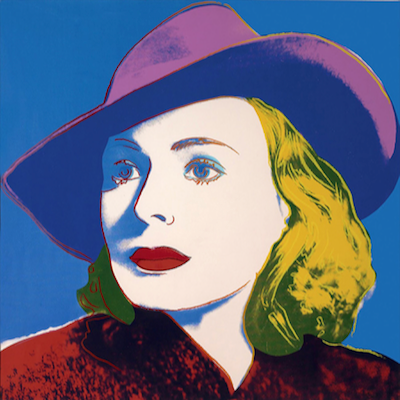
Details
Artist
Styles
Archival pigment print - Edition of 25 + 10 A.P. - Signed and numbered on the front // Canyons II by Richard Phillips, a limited edition pigment print from 2015, features a layered design of vibrant, repeating patterns and colors. The artwork showcases Phillips' distinct approach to combining pop culture elements with high-art aesthetics. Horizontal bands of ornate, swirling motifs in various colors—pink, purple, blue, and green—create a sense of rhythm and depth. Amidst these intricate patterns, a subtle white silhouette of the Playboy bunny logo appears at the lower edge, adding a playful, iconic touch. The contrast between decorative patterns and the pop culture symbol invites viewers to ponder the intersections of commercial imagery and artistic expression. Limited to 25 prints with an additional 10 artist proofs, this work is signed and numbered, marking it as both a collectible and a statement on contemporary visual culture.
Canyons II, 2015
form
Medium
Size
101.6 x 76.2 cm
- Inches
- Centimeters
Edition
Price
Details
Artist
Styles
Archival pigment print - Edition of 25 + 10 A.P. - Signed and numbered on the front // Canyons II by Richard Phillips, a limited edition pigment print from 2015, features a layered design of vibrant, repeating patterns and colors. The artwork showcases Phillips' distinct approach to combining pop culture elements with high-art aesthetics. Horizontal bands of ornate, swirling motifs in various colors—pink, purple, blue, and green—create a sense of rhythm and depth. Amidst these intricate patterns, a subtle white silhouette of the Playboy bunny logo appears at the lower edge, adding a playful, iconic touch. The contrast between decorative patterns and the pop culture symbol invites viewers to ponder the intersections of commercial imagery and artistic expression. Limited to 25 prints with an additional 10 artist proofs, this work is signed and numbered, marking it as both a collectible and a statement on contemporary visual culture.
What is pop-art?
Pop Art is an art movement that began in Britain in 1955 and in the late 1950s in the U.S. It challenged traditional fine arts by incorporating imagery from popular culture, such as news, advertising, and comic books. Pop Art often isolates and recontextualizes materials, combining them with unrelated elements. The movement is more about the attitudes and ideas that inspired it than the specific art itself. Pop Art is seen as a reaction against the dominant ideas of Abstract Expressionism, bringing everyday consumer culture into the realm of fine art.











